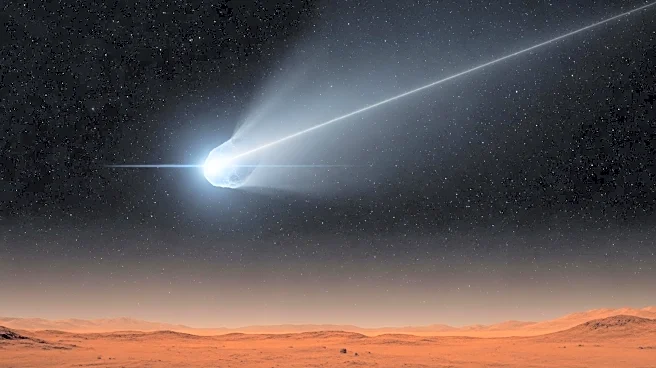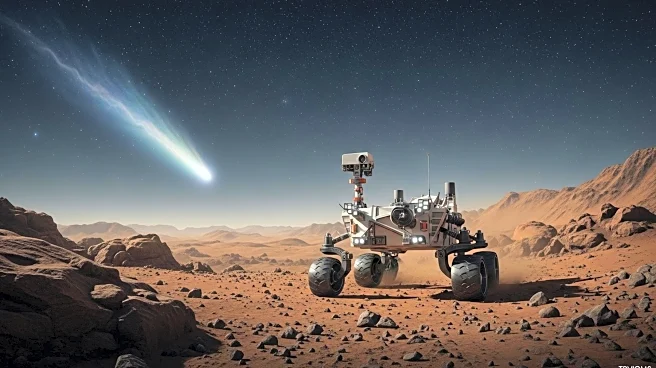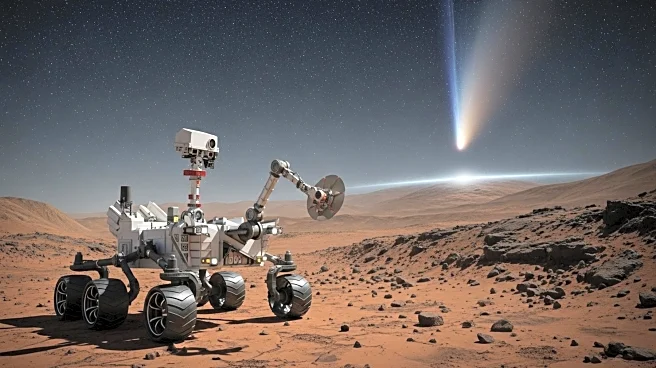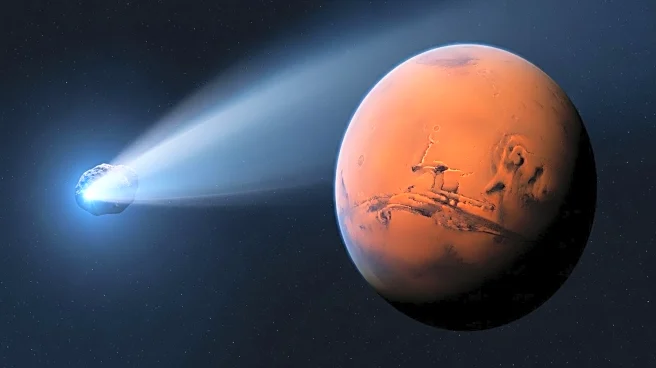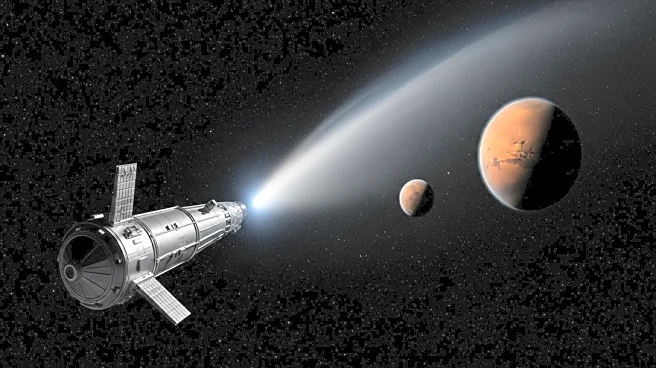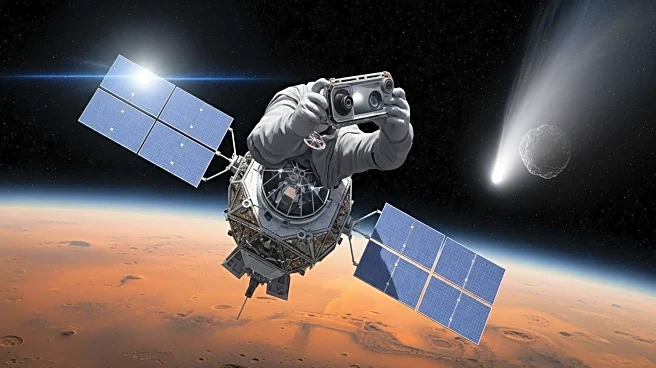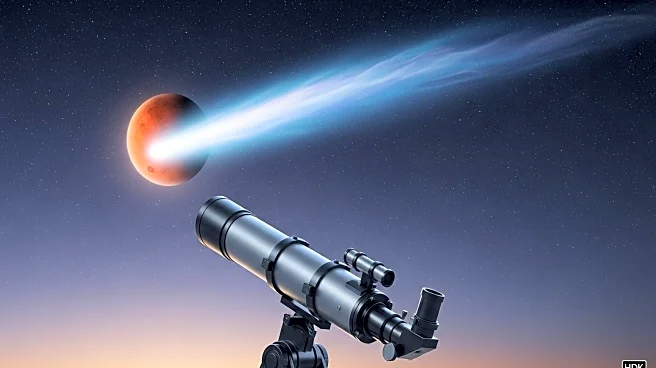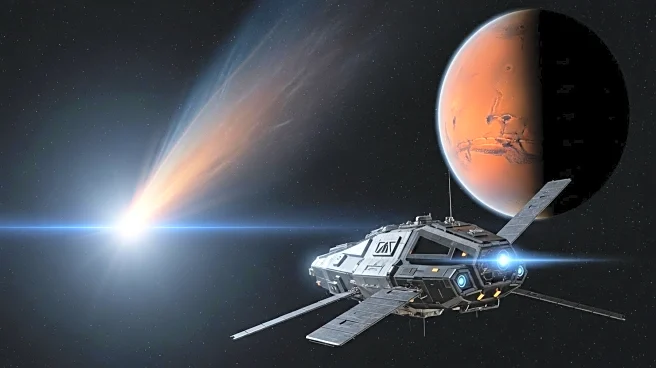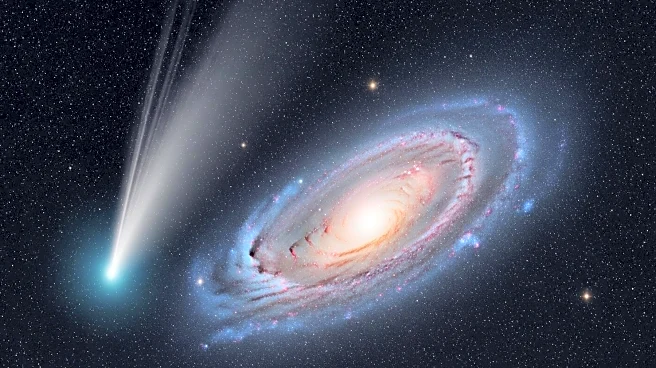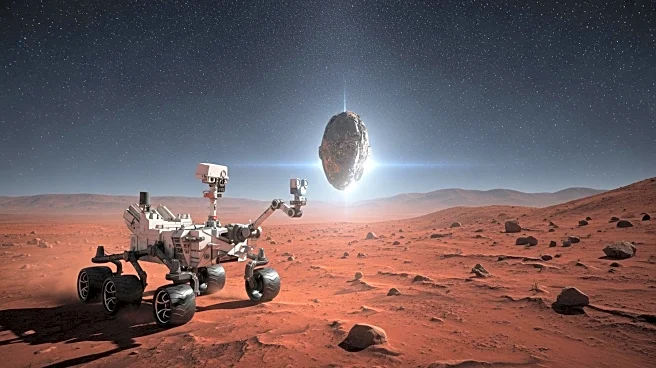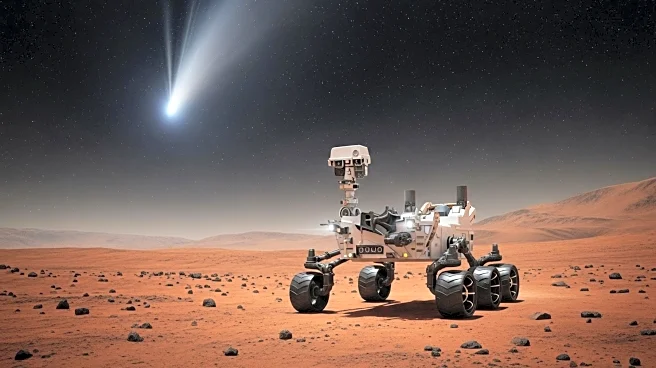What is the story about?
What's Happening?
Comet 3I/ATLAS, an interstellar object, has been captured in new images from Mars, sparking interest among astronomers. The comet, first detected in July, is on a path through the inner solar system, reaching its closest point to the sun on October 30. While it poses no threat to Earth, its proximity to Mars offers a unique opportunity for study. The ExoMars Trace Gas Orbiter captured images of the comet, despite challenges due to its faintness. NASA and other observatories plan further observations to study the comet's size and physical properties.
Why It's Important?
The observation of 3I/ATLAS provides insights into the nature of interstellar objects and their role in the solar system. These comets carry clues about the formation of worlds beyond our own, offering a rare opportunity to study their composition and behavior. The research could enhance our understanding of celestial dynamics and contribute to advancements in space science. The event also highlights the capabilities of current space technologies in capturing and analyzing distant objects, paving the way for future discoveries.
What's Next?
NASA plans additional observations of 3I/ATLAS using the Hubble Space Telescope and other observatories. The comet is expected to emerge into view again by early December, allowing further study of its characteristics. The ongoing research aims to uncover the mysteries of interstellar comets and their impact on our understanding of the universe.
Beyond the Headlines
The study of 3I/ATLAS challenges perceptions of the solar system's boundaries and underscores the importance of exploring interstellar phenomena. It raises questions about the origins and trajectories of such objects, prompting a reevaluation of celestial dynamics and the potential for new scientific insights.
AI Generated Content
Do you find this article useful?
